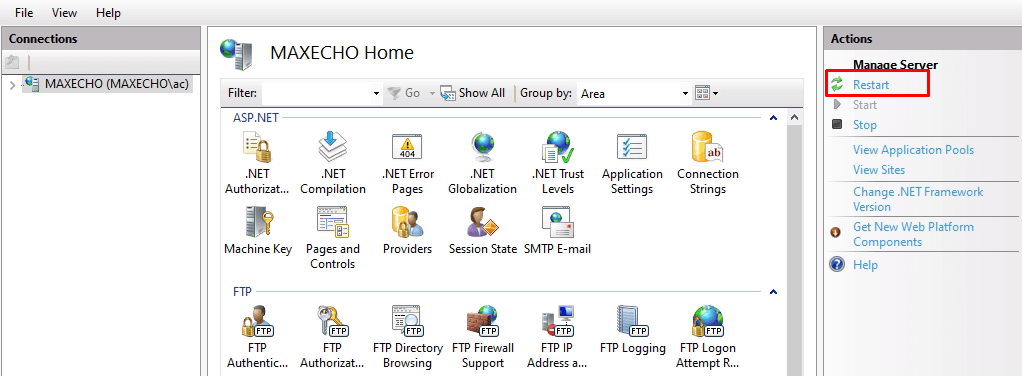Internet Information Services (IIS) is a web server software developed by Microsoft for use with the Windows operating system. It allows for the hosting and management of websites, web applications, and other internet-related services.
In some cases, it may be necessary to restart the IIS Server, for example, to apply changes made to configuration settings, or to resolve issues with performance or functionality.
Restarting the IIS Server can be done through the IIS Server Management Console or using PowerShell.
In either method, restarting the IIS Server involves selecting the desired application pool and initiating a restart command. This stops and restarts the IIS Server processes, allowing changes to take effect and any issues to be resolved.
Restarting IIS Server using IIS Server Management Console
To restart an IIS Server using the IIS Server Management Console on Windows 10, follow these steps:
- Open the IIS Server Management Console by searching for “IIS Manager” in the Windows search bar.
- In the left-hand pane, click on the server name to select it.
- In the center pane, under IIS section, double-click on “Application Pools”.
- In the right-hand pane, select the application pool you want to restart and then click on the “Restart” option in the actions pane (on the right).
- Confirm the restart by clicking “Yes” in the pop-up window.
- Wait for the process to complete and then verify that the IIS Server has restarted successfully.

Restarting IIS Server using PowerShell on Windows 10
To restart an IIS Server on Windows 10 using PowerShell, follow these steps:
- Open PowerShell as administrator.
- Type the following command and hit Enter:
Restart-WebAppPool -Name "DefaultAppPool"
Note: (Replace “DefaultAppPool” with the name of your desired application pool)
- Wait for the process to complete and then verify that the IIS Server has restarted successfully.


Leave Your Comment